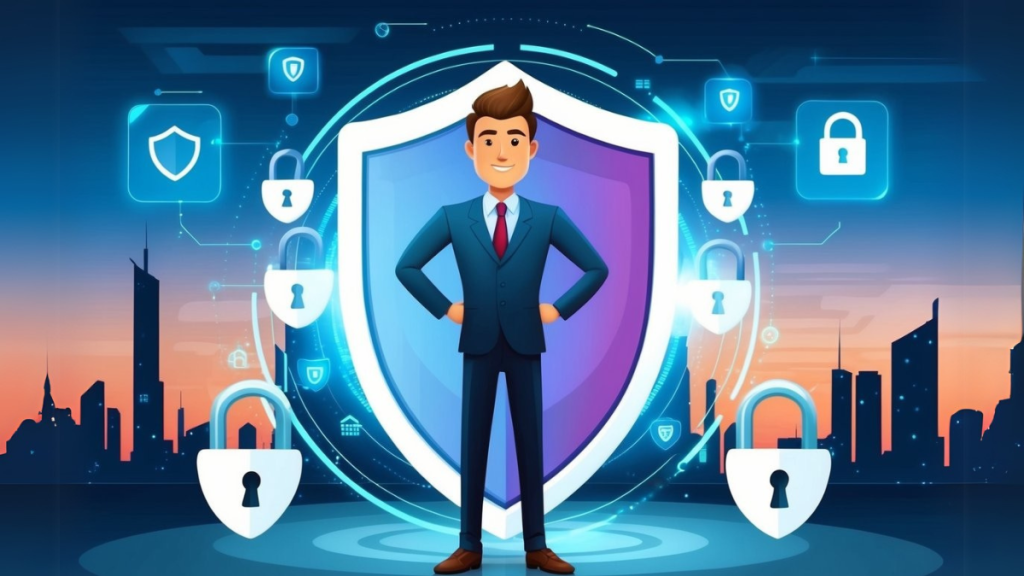As you look towards the future, it is going to be essential for the year 2025 to apply a two-pronged approach to protect your business given the potential for new cyber threats and a pre-existing issue with breaches of physical security. Cybersecurity Ventures forecast that global costs of cybercrime will reach $10.5 trillion per year by 2025 and the FBI went on to state that commercial burglaries have increased by 13% year over year. If you are a small startup or managing a large company, it is no longer optional to consider your digital and physical security. It is now pivotal to the success of your business.
Modern Surveillance and Commercial Building Security Systems
The evolution of surveillance systems have progressed miles ahead of cameras and one monitor. Today’scommercial buildings security systems integrate high-tech combinations of abilities that include high definition CCTV’s, motion detection, mobile applications for remote access, and artificial intelligence (AI) analytics to detect and notify concerning behaviors in real time. Surveillance systems provide an outstanding level of deterrence to unwanted and unexpected break-ins / entry that can monitor your facility in 24 hour real time and follow up monitoring. On top of that, sophisticated monitoring systems allow for quick notifications, and cloud-based video back up of any and all footage, allowing for quick response to incidents, and be there in case proof is needed.
A good monitoring system is only as effective as the placement, and coverage. Make sure that each potential entry point, loading dock, parking lot, and blindspot are under continuous surveillance. When you have surveillance integrated with access systems and alarms you have layers of protection for your assets and your team.
Strengthen Your Cybersecurity Infrastructure
In today’s environment, many threats are coming from digital means. As we see into 2025, we will continue to see major amounts of AI based, cyberattacks, phishing attacks, and ransomware attacks. The most effective first step to protect your digital assets is completing what updates your systems offer so that you are able to have all the security patching available for those systems. Software updates protect you by eliminating vulnerabilities that are known to exist by closing them so that risks of damage from exploits against those vulnerabilities can not happen.
Employee training is just as vital. Human error is the leading cause of data breaches. Routine cybersecurity training will help staff realize phishing emails, create strong passwords, and know the proper ways to send sensitive materials. Provide your entire organization with MFA, endpoint encryption, and a firewall for your networks.
Bringing on board a professional cybersecurity company or full-time IT security personal could also be a very successful way to enhance your defenses, for example, they could do penetration testing, monitor network traffic, respond to incidents in a timely manner, and keep preparing for the new and changing threat landscape.
Secure Physical Access Points
Controlling physical access to your location is another key element of business security. Different advanced locks, biometrics access, and keycard access can help you restrict access to sensitive areas of your business, such as your IT server room, inventory room, or executive officer. Using one or more of these options will provide you with a track record of who comes and goes from your location. In addition to the security perspective, this data will also help you use access management for operational reasons.
Implementing a visitor management system can also reduce the risk of unauthorized entry. Require that every visitor check-in at a reception point, with easily identifiable identification. You can also offer temporary access badges that can be disabled after a certain time, denying after-hours access.
Backup and Disaster Recovery Planning
Data is the life-blood of many companies and losing it to a cyberattack or physical disaster can be devastating. Building a proper data backup and disaster recovery plan will allow your business to recover quickly and easily. Use automated, encrypted cloud back-ups with multiple redundancies to avoid single points of failure.
In conjunction with digital backups, retain hard copies of key documents (legal contracts, tax documentation, emergency plans, etc.) in a safe place. You should practice restoring from your plan to limit downtime in actual events.
Invest in Cyber Insurance
Cyber insurance is quickly moving to a need instead of a want. Policies can cover losses from data breaches, business disruptions, and liability expenses for security breaches. With a growing focus on regulatory scrutiny and customers having heightened privacy worries, having a policy can help mitigate financial and/or reputational impact.
Review the policies carefully. Make sure that you have coverage for breach response services, legal costs, and business interruption coverage. You may be charged different premiums depending on your security posture, so by taking preventive measures, it is likely you will save on your insurance.
Monitor and Audit Regularly
Security is not a once-and-done set-up, but something to do a regular audit on and will help position you in front of potential vulnerabilities. Go through access logs, check camera footage, evaluate cybersecurity policies, and check for expired employee credentials, among many other things.
Utilizing a security audit tool and/or third party security assessment, can provide you with an impartial perspective. Another way to mitigate and control risk, is by recognizing vulnerabilities and accepting the risk proactively, rather than waiting for a breach or violation to occur, which would be a lot more expensive to address.
Final Thoughts
As your business looks ahead to 2025, protecting it means acting in a proactive and holistic approach with tools and technology, employee education and trainings, and monitoring and vigilance. Every step you take from outfitting your commercial building protections with smart surveillance, to enhanced employee cybersecurity protocols represents an opportunity to further defend against the evolving and increasing number of threats.
Stay aware, stay educated, and make security a constant part of your business model. Because in this world, the no longer a question of if, but of when.

